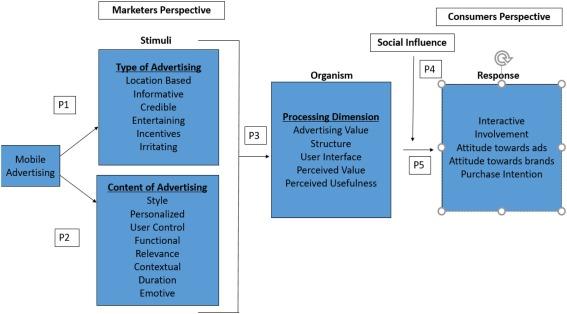Unlocking Success as a Learning Architect: Key Skills, Roles, and Career Pathways
Are you passionate about transforming the future of education through technology? The role of a Learning Architect is rapidly emerging as a critical position in universities, colleges, and schools as institutions embrace digital learning environments. Whether you’re an experienced educator, a technology enthusiast, or a professional seeking a career pivot, understanding how to succeed as a learning Architect can open doors to dynamic, impactful roles. In this extensive guide, we will delve into what it means to be a Learning Architect, outline essential skills, highlight typical responsibilities, explore career growth opportunities, and offer practical tips to help you land your dream job in education technology.
What is a learning Architect?
A Learning Architect, often called an Instructional Designer or Educational Technologist, designs, implements, and optimizes educational experiences using cutting-edge technology. Their work is vital in shaping today’s digital classrooms, virtual learning, and blended learning environments in higher education and K-12 settings. Learning Architects collaborate with educators, administrators, and IT professionals to ensure effective, engaging, and accessible learning experiences for all students.
Key Roles and Responsibilities of a Learning Architect
The responsibilities of a Learning Architect can vary by institution,but tend to focus on the following core areas:
- Curriculum Design and Development: Creating engaging,standards-aligned learning modules and resources using educational technology platforms.
- Learning Management Systems (LMS) Management: Managing and optimizing platforms such as Canvas, Blackboard, or Moodle.
- technology Integration: Identifying and implementing the latest digital tools and technologies that enhance teaching and learning.
- Collaboration with faculty and Staff: Partnering with educators to translate learning objectives into effective digital experiences.
- Assessment and Evaluation: Developing metrics and tools to measure student learning outcomes and program effectiveness.
- Professional Development: Training educators and staff to adopt new technologies and pedagogical approaches.
- Accessibility and Inclusion: Ensuring that digital learning materials are accessible to all learners, including those with disabilities.
Essential Skills for Success as a Learning Architect
To thrive in a Learning Architect job, especially within education technology at universities, colleges, or schools, you’ll need a robust mix of technical and soft skills:
Technical Skills
- Instructional Design: Expertise in designing learner-centered curricula and digital content.
- LMS Proficiency: Familiarity with leading Learning Management Systems (LMS) and e-learning authoring tools (such as Articulate Storyline, Adobe Captivate, or SCORM packages).
- Understanding Educational Theories: Knowledge of learning models like Bloom’s Taxonomy, Worldwide Design for Learning (UDL), and backward design.
- Data Analysis: Ability to interpret data related to student engagement and performance to inform continuous improvement.
- Web and Multimedia Development: Basic skills in HTML, CSS, and media editing for interactive content creation.
Soft Skills
- Project Management: Managing multiple projects, timelines, and stakeholders efficiently.
- Communication & Collaboration: Effective interpersonal skills for working with diverse teams.
- Creativity & Problem-Solving: Innovating solutions to complex educational challenges.
- Adaptability: Keeping pace with rapidly evolving technologies and institutional needs.
- Critical Thinking: Evaluating educational technologies and instructional strategies rigorously.
Career Pathways for Learning Architects in Education Technology
A career as a Learning architect offers diverse opportunities for growth in the education sector. You may encounter these typical career pathways:
- Entry-Level: Instructional technologist, eLearning Coordinator, or Educational Technology Specialist.
- Mid-Level: Learning Designer, Senior Instructional Designer, Digital Learning Innovator, or Learning Experience Designer.
- Advanced: Chief Learning Architect, Director of Educational Technology, or Dean of Digital Learning.
Some Learning Architects also transition into faculty development, curriculum leadership, or pioneering education technology research and policy roles.
Benefits of Being a Learning Architect in Universities, Colleges, or Schools
Working as a learning Architect in the education sector comes with numerous advantages:
- Purposeful Impact: Shape the educational experiences and outcomes for thousands of students.
- Continuous Innovation: Work with emerging technologies from AR/VR to AI-driven learning analytics.
- Professional Growth: Access robust professional development and networking opportunities.
- Job Stability: Growing demand for digital learning experts in both K-12 and higher education institutions.
- Collaboration and Influence: work directly with academic leaders, IT teams, and teaching faculty to drive institutional change.
Practical Tips to Secure a Learning Architect Position
Ready to start your journey as a Learning Architect? Here are practical tips to strengthen your profile and stand out in the competitive education technology job market:
- Develop a Solid Foundation: Earn relevant qualifications such as a degree or graduate certificate in instructional design, education technology, or curriculum development.
- Build a Diverse Portfolio: Showcase your work in curriculum design, e-learning module development, or digital assessments. Include case studies that highlight measurable outcomes.
- Gain Hands-On Experience: Volunteer or intern in school or university digital learning departments to build your experience and connections.
- Stay Updated with Trends: Regularly engage with professional organizations,webinars,and workshops to stay current on new technologies and instructional methodologies.
- Highlight Soft Skills: Demonstrate your collaboration, leadership, and problem-solving skills on your resume, LinkedIn, and in interviews.
- Prepare for Institutional Needs: Research prospective employers, understand their digital learning strategies, and tailor your applications to address specific needs.
Conclusion: Your Future as a Learning Architect in Education Technology
As education technology continues to revolutionize how students learn, Learning Architects are instrumental in guiding this change within universities, colleges, and schools. By cultivating a mix of instructional design expertise, digital fluency, and collaborative skills, you can unlock rewarding opportunities that blend innovation, impact, and career advancement. Start building your skills, portfolio, and professional network today—your career as a Learning Architect in education technology awaits!

